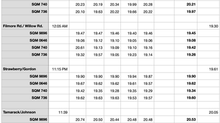Cell-estial Photos
- Chuck Bueter
- May 8
- 2 min read
Updated: May 13
A newer cell phone can take excellent images of astronomical targets. As twilight segues to night, set your phone for 3- to 10-second exposures, point skyward, click, and hold still. The results will amaze you. Among attainable sights are Crux, the Southern Cross; bright comets; the site of the T Coronae Borealis nova; the Milky Way: double stars; Starlink satellites, aurorae, planets, and lunar eclipses. Additionally, by day see Venus, the moon, sun halos, and sunsets.
Whereas a long duration exposure formerly yielded a blurry image if the camera were not steady, a modern phone aligns and stacks an extended sequence of images. The results are featured celestial phenomena in front of focused, bright stars beyond what the naked eye can see.
These images are taken with the iPhone camera in automatic mode, with the only change being sometimes to set the exposure from the default 3 seconds up to 10 seconds. Zoom in to see image details. See https://www.nightwise.org/single-post/camera-settings-for-iphone-astronomy for setting an iPhone manually.
Southern Cross

Milky Way

Aurora

Comet

Lunar Eclipse

Nova Site

Starlink

Daytime Venus

Winter Constellations

Summer Constellations

Planets

Lunar Eclipse

Sun Halo

Sunset

Other...








































